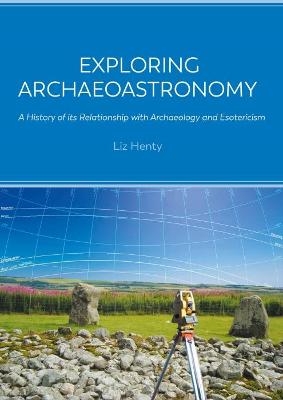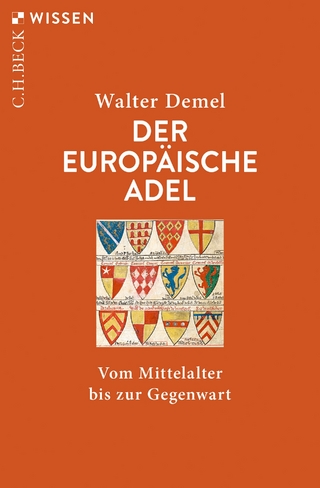
Exploring Archaeoastronomy
A History of its Relationship with Archaeology and Esotericism
Seiten
2022
Oxbow Books (Verlag)
978-1-78925-786-1 (ISBN)
Oxbow Books (Verlag)
978-1-78925-786-1 (ISBN)
A fascinating account of the development of archaeoastronomy, its impact on archaeological interpretation and its future potential for revealing human relationships with skyscapes in the past.
Archaeoastronomy and archaeology are two distinct fields of study which examine the cultural aspect of societies, but from different perspectives. Archaeoastronomy seeks to discover how the impact of the skyscape is materialised in culture, by alignments to celestial events or sky-based symbolism; yet by contrast, archaeology's approach examines all aspects of culture, but rarely considers the sky. Despite this omission, archaeology is the dominant discipline while archaeoastronomy is relegated to the sidelines. The reasons for archaeoastronomy’s marginalised status may be found by assessing its history. For such an exploration to be useful, archaeoastronomy cannot just be investigated in a vacuum but must be contextualised by exploring other contemporaneous developments, particularly in archaeology. On the periphery of both, there are various strands of esoteric thought and pseudoscientific theories which paint an alternative view of monumental remains and these also play a part in the background.
The discipline of archaeology has had an unbroken lineage from the late 19th-century to the present. On the other hand, archaeoastronomy has not been consistently titled, having adopted various different names such as alignment studies, orientation theory, astro-archaeology, megalithic science, archaeotopography, archaeoastronomy and cultural astronomy: names which depict variants of its methods and theory, sometimes in tandem with those of archaeology and sometimes in opposition. Similarly, its academic status has always been unclear, so to bring it closer to archaeology there was a proposal in 2015 to integrate archaeoastronomy research with that of archaeology and call it skyscape archaeology. This volume examines how all these different variants came about and consider archaeoastronomy's often troubled relationship with archaeology and its appropriation by esotericism, to shed light on its position today.
Archaeoastronomy and archaeology are two distinct fields of study which examine the cultural aspect of societies, but from different perspectives. Archaeoastronomy seeks to discover how the impact of the skyscape is materialised in culture, by alignments to celestial events or sky-based symbolism; yet by contrast, archaeology's approach examines all aspects of culture, but rarely considers the sky. Despite this omission, archaeology is the dominant discipline while archaeoastronomy is relegated to the sidelines. The reasons for archaeoastronomy’s marginalised status may be found by assessing its history. For such an exploration to be useful, archaeoastronomy cannot just be investigated in a vacuum but must be contextualised by exploring other contemporaneous developments, particularly in archaeology. On the periphery of both, there are various strands of esoteric thought and pseudoscientific theories which paint an alternative view of monumental remains and these also play a part in the background.
The discipline of archaeology has had an unbroken lineage from the late 19th-century to the present. On the other hand, archaeoastronomy has not been consistently titled, having adopted various different names such as alignment studies, orientation theory, astro-archaeology, megalithic science, archaeotopography, archaeoastronomy and cultural astronomy: names which depict variants of its methods and theory, sometimes in tandem with those of archaeology and sometimes in opposition. Similarly, its academic status has always been unclear, so to bring it closer to archaeology there was a proposal in 2015 to integrate archaeoastronomy research with that of archaeology and call it skyscape archaeology. This volume examines how all these different variants came about and consider archaeoastronomy's often troubled relationship with archaeology and its appropriation by esotericism, to shed light on its position today.
Liz Henty is an honorary research fellow at the University of Wales Trinity Saint David and co-founder and co-editor of the Journal of Skyscape Archaeology. Apart from her research into the history of archaeoastronomy she also conducts archaeoastronomical surveys at the Recumbent Stone Circles of Northeast Scotland.
1. Introduction: contesting the past
2. Antiquarianism: the longue durée
3. The emergence of archaeoastronomical thought
4. ‘The great subject of orientation’
5. Lines in the landscape
6. ‘God in the machine’
7. Megalithic science
8. New World archaeoastronomy
9. A turning point for British archaeoastronomy
10. Archaeoastronomy and cultural astronomy in Europe
11. Archaeoastronomy in the 21st century
12. Final Thoughts
Glossary
Bibliography
| Erscheinungsdatum | 28.03.2022 |
|---|---|
| Zusatzinfo | B/w and colour |
| Verlagsort | Oxford |
| Sprache | englisch |
| Maße | 170 x 240 mm |
| Themenwelt | Geisteswissenschaften ► Archäologie |
| Geschichte ► Teilgebiete der Geschichte ► Kulturgeschichte | |
| ISBN-10 | 1-78925-786-7 / 1789257867 |
| ISBN-13 | 978-1-78925-786-1 / 9781789257861 |
| Zustand | Neuware |
| Informationen gemäß Produktsicherheitsverordnung (GPSR) | |
| Haben Sie eine Frage zum Produkt? |
Mehr entdecken
aus dem Bereich
aus dem Bereich
der stille Abschied vom bäuerlichen Leben in Deutschland
Buch | Hardcover (2023)
C.H.Beck (Verlag)
23,00 €
vom Mittelalter bis zur Gegenwart
Buch | Softcover (2024)
C.H.Beck (Verlag)
12,00 €


